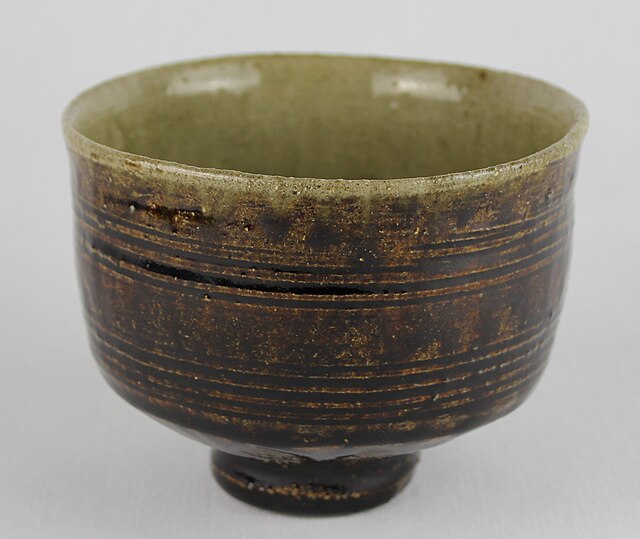Shōji Hamada was a Japanese potter. He had a significant influence on studio pottery of the twentieth century, and a major figure of the mingei (folk-art) movement, establishing the town of Mashiko as a world-renowned pottery centre. In 1955 he was designated a "Living National Treasure".
Thrown, combed tea bowl by Shoji Hamada
Shōji Hamada Memorial Mashiko Sankokan Museum
A square plate with iron pigment brushwork by Shōji Hamada
The concept of mingei (民芸), variously translated into English as "folk craft", "folk art" or "popular art", was developed from the mid-1920s in Japan by a philosopher and aesthete, Yanagi Sōetsu (1889–1961), together with a group of craftsmen, including the potters Hamada Shōji (1894–1978) and Kawai Kanjirō (1890–1966). As such, it was a conscious attempt to distinguish ordinary crafts and functional utensils from "higher" forms of art – at the time much admired by people during a period when Japan was going through rapid westernisation, industrialisation, and urban growth. In some ways, therefore, mingei may be seen as a reaction to Japan's rapid modernisation processes.
Thrown, combed tea bowl by Shōji Hamada
Leather Fireman's Coat, late 19th century. Brooklyn Museum
Thrown bowl by Bernard Leach
Inu-Hariko (Papier-mache Puppy Doll), ca. 1950. Brooklyn Museum






